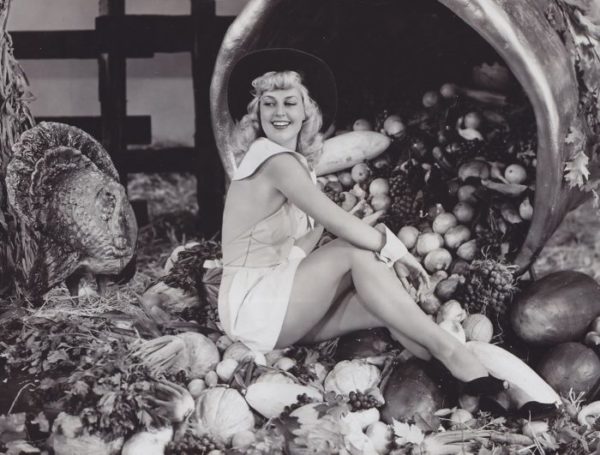To put it mildly and in proper food terms, the year 2020 has been a giant shit sandwich. There’s really no other way to describe this wretched twelve months but as a generous helping of small-batch, locally-sourced feces piled high on day-old artisan bread, sourdough of course.
A once-in-a-lifetime public health crisis pitted the intimacy of restaurants against itself, making the most endearing element of a restaurant experience its greatest liability. The service industry, once priding itself on staying open at all costs, faced a cost too great to stay open. After years of boundless expansion, the restaurant industry has finally had to reckon with its own mortality.
The economics of restaurants were already tenuous before the Coronavirus. For many years now, the only way to make money in restaurants was to open more restaurants. Most independents are lucky if they manage to break even. A majority die young.
Despite the unfavorable odds each individual business has of surviving, the restaurant industry as a whole has been an overflowing reservoir of menial jobs. It’s only recently that restaurant work offered legitimate career opportunities, owing to the exploding popularity of fine dining. Now, it’s unlikely that restaurants will continue to be a reliable source of income for transient workers, and hospitality careers may become less attractive as the industry struggles to rebuild.

The scope of the devastation is staggering. Seventeen percent of American restaurants have already permanently closed—the latest estimates totaling over 100,000. According to the National Restaurant Association, 10,000 of these restaurants have closed in just the last three months alone.
In the face of such austere lockdown measures, restaurants have had to mine new revenue streams—pivoting to carry out and delivery, takeout cocktails, meal kits, outdoor pop-up events or off-site catering. Restrictions have intensified into the winter months, prompting many restaurant owners to mothball operations until case numbers decline.
Economic prognosticators appear to be underestimating the scarring that will occur from these mass casualties. Government agencies, by and large, have absconded when faced with a growing call for financial support. The latest stimulus package passed by Congress does little to stem the tide. Applying a bandaid to a severed artery won’t do much to stop the bleeding.
The RESTAURANTS Act, a $120 billion rescue package introduced in June to aid independent restaurants, appears dead on arrival, even though it’s been publicly endorsed by many celebrity chefs and a bipartisan coalition in Congress. The message from our political leaders has been clear: Restaurants are non-essential businesses and do not carry the same preferred status as big banks, the airline industry, or tech monoliths.
Restaurants were newsworthy in 2020 for reasons other than the pandemic, rarely in ways that reflected positively on the industry. Chef Jean-Georges Vongerichten proudly boasted about punching a former dishwasher. The James Beard Foundation floundered in its handling of the results of its 2020 Awards after postponing its annual gala. When preliminary results revealed no people of color among this year’s honorees, the Foundation elected to cancel the program and conceal the results.
According to a salacious report by the New York Times, we learned that the Court of Master Sommeliers was a haven for misogyny and harassment against its female members. Even the venerable Danny Meyer—the Zeus of hospitality—was called out by his employees for failing to follow through with promised diversity initiatives. And just this week we learned from an ex-employee how rotten the peaches really were in David Chang’s Momofuku empire. None of these stories came as a surprise to any seasoned restaurant professionals. They were pretty much par for the course in a country club that has always been exclusively white and male.
The Black Lives Matter movement, among its many achievements, pulled the curtain on white privilege in the fine dining world. The restaurant industry has been slow to acknowledge its race problem. Inequities in hiring, promotion, and recruitment of executive chefs and upper level management are endemic problems that have long been swept under the lily white rug.
Food media’s complicity in centering the white narrative in culinary also came under overdue scrutiny. With the discrediting of prominent figureheads like Adam Rapaport of Bon Appetit and Peter Meehan of the LA Times, food journalism has made modest strides toward acknowledging gender and racial inequities. Major newspapers have added a roster of critics and food writers with more diverse backgrounds like Soleil Ho of the San Francisco Chronicle and Patricia Escarcéga of the Los Angeles Times (though there appear to be some entanglements around pay disparity that cast a gray cloud over her recruitment).
A new generation of gatekeepers has a chance to alter the landscape of the food world to be more inclusive. Food writing and restaurant criticism has been unapologetically Caucasian-forward for decades, and we shouldn’t expect the old guard to go quietly. It will be interesting to see, after the pandemic subsides, whether these many lessons learned will produce tangible change or whether the industry returns to its bad habits.

The challenges ahead will require innovative solutions. For restaurants to survive, they will need to utilize technology to operate more efficiently. Unfortunately, most independent restaurants lack the capital to invest in improving IT systems. This is why so many restaurants rely on older generation Micros POS systems with obsolete software until they breakdown like a beat up old car. Chain restaurants have had a huge advantage over mom-and-pops in deploying technological solutions to facilitate off-premise delivery and curb-side pickup for takeout orders.
Third-party food delivery apps, disguised as business partners, have exploited underfunded independent restaurants that lack the technology to reach more consumers. Once app-based delivery services convince restaurants to join their platform, they become ruthless pimps, squeezing already narrow profit margins even tighter. Some companies siphon up to 30% from each transaction, leaving the restaurants to barely break even just to reach a broader audience. As rents and labor costs rise, the economics of running a profitable restaurant are untenable, irreparably broken from years of operating within a flawed system.
The pandemic has shortened the lifespan of so many restaurants already, including culinary institutions that define the character of their cities. We grieve, yet we often internalize our grief based upon the harrowing prospect of future unquenched desires. We lament missing that perfectly-cooked steak au poivre or the sun-drenched outdoor cafe where we’d meet friends for brunch every weekend. What we don’t always properly grieve for are the individuals who made those places so special that have lost their livelihoods by no fault of their own.
The impact of the pandemic is already being felt at street level, but it will have a ripple effect throughout the supply chain of purveyors that depend on a healthy food and beverage industry. The systemic risk the industry faces is widely misunderstood by politicians who appear to underestimate the importance of restaurants in their communities. Those of us who work in the service industry feel abandoned, even betrayed. How can we keep serving our communities in good faith if our communities aren’t willing to serve us?
Ultimately, the wellness of independent restaurants is a reflection of the wellness of our communities. Let’s hope the coming year brings restoration —health, happiness and, eventually, tables filled with hungry guests sitting less than six feet apart.



